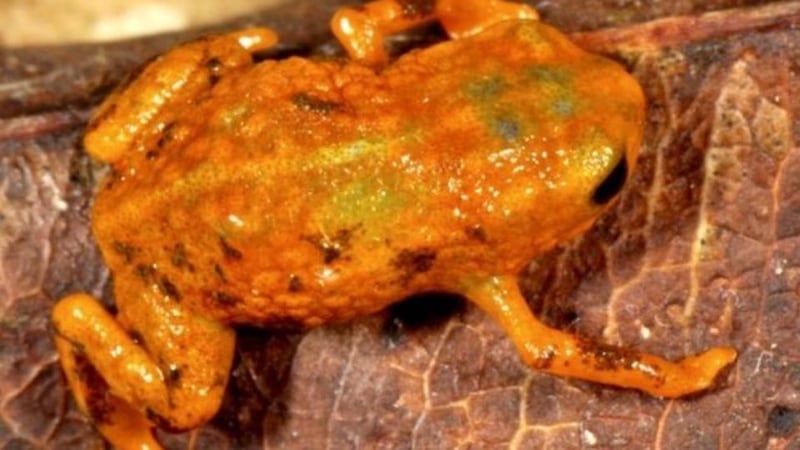Seven new species of miniature frog, smaller than bumblebees, have been discovered clinging to survival on isolated mountaintops in Brazil.
The largest of the new discoveries has a maximum adult length of just 13mm. The frogs, which are among the smallest land vertebrates, have evolved with fewer fingers and toes in order to reduce their size.
Miniaturisation allows the frogs to emerge from their eggs as fully-formed, albeit tiny, adults. This means they do not go through a tadpole stage and can survive far from standing water.

Highly efficient absorption allows them to stay hydrated by soaking water from damp ground through the skin on their bellies.
Marcio Pie, a professor at the Universidade Federal do Paraná, led a team of researchers on a five-year exploration of the mountainous cloud forests on the southern Atlantic coast of Brazil. They published their study in the journal PeerJ on Thursday.
“Although getting to many of the field sites is exhausting, there was always the feeling of anticipation and curiosity about what new species could look like”, said Prof Pie.
The frogs are all species from the Brachycephalus genus, which are often tiny in size.
‘Sky islands’
They live on "sky islands", areas of high forest on mountains surrounded by lower altitude rainforest. The tiny frogs are highly adapted to their conditions and sometimes restricted to a single mountain. There they have evolved in isolation over millennia – much like the unique species on separate Galapagos islands that so fascinated Charles Darwin.
Prof Pie said this extreme endemism makes them exceptionally vulnerable to changes in their habitat. Their major threats are illegal logging and changes to cloud forests caused by climate change. None of the newly-described species are in reserves and many live relatively close to cities where the forest can be more easily impacted.
“The really big concern is climate change because the cloud forest depends on the delicate balance between the water that comes from the ocean and the topography. If there’s some sort of warming it’s possible that that sort of really humid forest will disappear and with that all the endemic species, not only our frogs but other types of organisms,” he said.
The study increases the number of recognised species in the genus by 50 per cent to a total of 21.
Luiz Ribeiro, a research associate to the Mater Natura Institute for Environmental Studies, said the new discoveries suggested there were many more to find.
“This is only the beginning, especially given the fact that we have already found additional species that we are in the process of formally describing.”
The find comes against a background of catastrophic amphibian decline worldwide caused by a chytrid fungus.
At least 200 species of frog have been driven to extinction or declined because of the disease the fungus causes. Prof Pie said the frogs may be protected from chytrid by their ability to survive away from the water sources where the fungus is often found.










